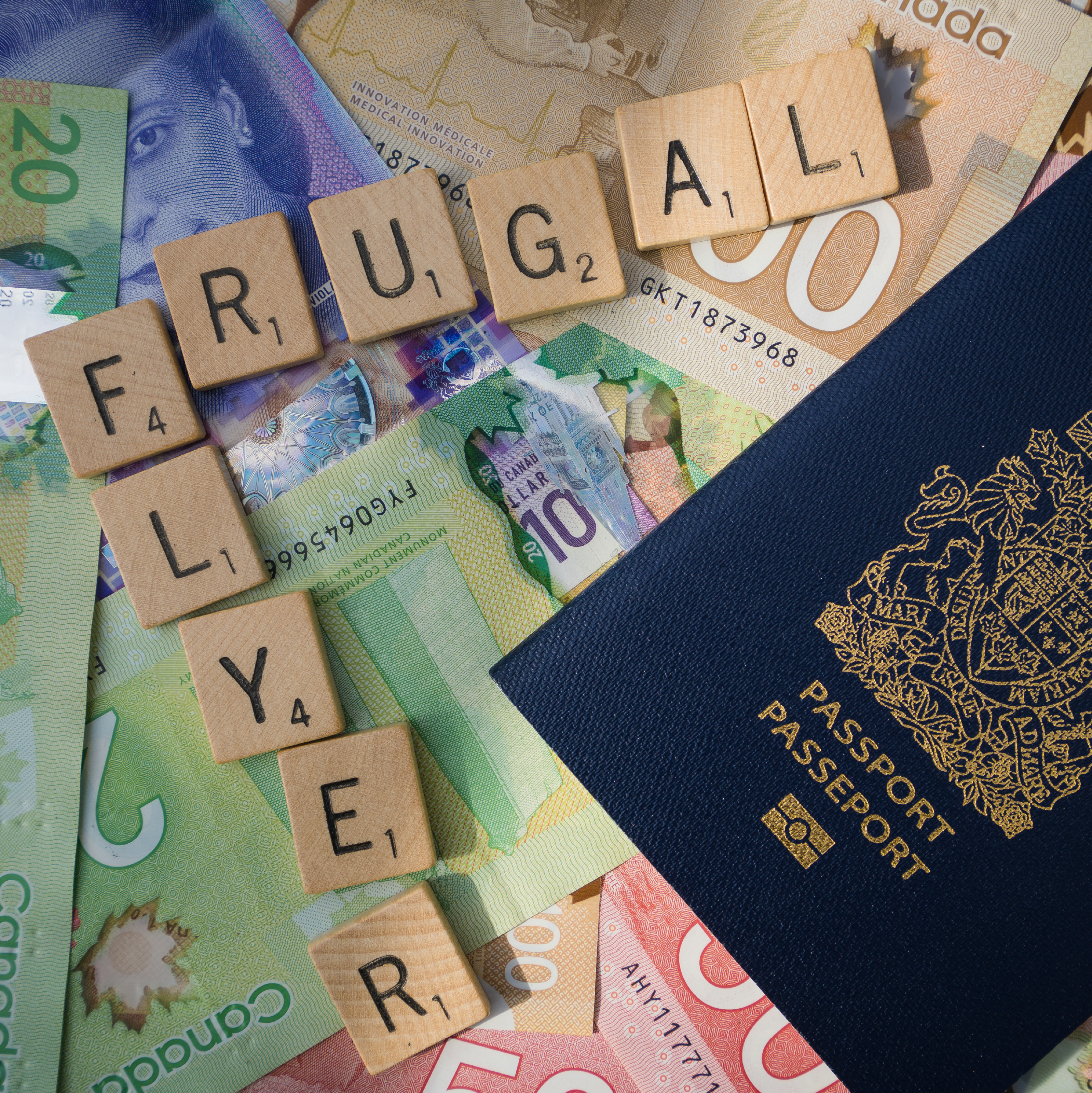When you buy trip protection as part of a travel insurance plan, you will be asked to provide your trip cost. That trip cost will be used to ensure that you have the right amount of coverage to meet your needs. It’s also used to calculate the cost of the plan.
Trip protection is designed to reimburse you for the unused portions of the nonrefundable travel arrangements you paid for before your trip. It’s possible that not every dollar spent as part of your trip is insurable, or that you even want to insure every dollar. Refundable fees from your resort, for example, would not be included in your insurable trip cost.
Here’s what you’ll find in the article below as you learn how to calculate trip cost and get the travel insurance coverage you need.
- How do I figure out my nonrefundable trip cost?
- What types of trip expenses should I include in my insurable trip cost?
- Do I need to add free items to my insurable trip cost?
- Can I insure frequent flyer miles?
- Are insurable trip costs per person?
- Can I insure trip expenses paid to a friend?
- How do you calculate trip cost for groups?
- Can you adjust your insurable trip cost?
- FAQs about trip protection
How Do I Figure Out My Nonrefundable Trip Cost?
To calculate trip cost for travel insurance, add up everything you’ve prepaid for when booking your trip. Then subtract any of the expenses on that list that are refundable. What you’re left with is the nonrefundable trip cost you should report when purchasing travel insurance.
Here’s an example.
Dave is planning a trip to Bermuda. His prepaid expenses are:
- Airfare: $800
- Hotel: $2,000 ($200 is refundable if he needs to cancel)
- Excursions: $500
Dave’s total prepaid expenses are $3,300. His insurable trip cost, however, is only $3,100. This represents the total expenses minus the $200 refundable amount for his hotel. He should not buy coverage for trip expenses that are refundable.
What Types of Trip Expenses Should I Include in My Insurable Trip Cost?
Trip expenses can consist of prepaid, nonrefundable expenses for travel arrangements, which are transportation, accommodations and other specified services arranged for your trip. Examples of insurable trip expenses can include:
- Airfare
- Cruise fare
- Hotels
- Vacation rentals, such as a condo or Airbnb
- Entertainment and excursions
You would not include expenses in your insurable trip cost if those expenses are refundable. This is because another party such as your airline, cruise line, or hotel is going to refund the money you spent, according to their stated refund guidelines, which you should always review.
Do I Need to Add Free Items to My Insurable Trip Cost?
Just as you wouldn’t insure refundable expenses, you also would not insure free items. If you receive part of your trip for free (maybe an excursion was thrown in for free as part of your hotel booking), then don’t include it as part of your insurable trip cost.
Why not? If you must cancel, delay, or interrupt your trip and miss the excursion, you would not lose any money, so that item does not need to be included as part of your insurable trip cost.
Can I Insure Frequent Flyer Miles?
Frequent flyer miles should not be included as part of your insurable trip cost. However, trip insurance can provide limited coverage for the cost of the airline-imposed fees to re-bank frequent flyer miles.
Are Insurable Trip Costs Per Person?
Yes. When buying trip protection, you should calculate the cost of the trip for each person, according to what he or she paid.
Each traveler is covered up to the lesser of their insurable trip cost on the plan or their nonrefundable, unused trip costs. In other words, the plan will not reimburse you for more than the amount you insured.
Here’s another example.
Bob and Nancy are taking a trip, and they are buying one travel protection plan for both of them. Bob paid $1,000 and Nancy paid $2,000. (Maybe Nancy is going on a solo excursion without Bob.) When they buy their plan, Bob should provide $1,000 as his insurable trip cost, and Nancy should provide $2,000 as her insurable trip cost.
Can I Insure Trip Expenses Paid to Friend?
Yes. It’s a good idea to pay your friend via a method that provides proof of payment, such as records from Venmo or a bank statement. That way, if you have to make a claim, you have evidence of payment.
We know it’s common for one person to pay for a rental house on their credit card and have their friends pay them back, or for each person to reimburse the friend who booked an excursion for the group. That’s why we try to make it easy to still cover those expenses, even if your travel buddy played the middleman.
How Do You Calculate Trip Cost for Groups?
If you are purchasing a plan to cover more than one person, it is important to calculate the trip cost per person, according to what each person paid. It’s up to the travelers to decide how to split the expense to pay for the shared reservation.
If the group shares equally in paying for the booking, then the amount should be divided between each individual in the group, and each would calculate their share of the insurable trip cost.
Here’s an example of how that works:
Sarah’s bachelorette party booked a rental house for $1,000. There are five people going, and each of them paid $200. They should each list $200 as their insurable trip cost. If each person is not named on the booking, they may need to provide other proof they paid the $200.
Of course, not all groups divide their trip expenses the same way, or at all. Here’s another example:
Taylor rented a house for $1,000 for an annual golf trip. Again, there are five people going, but Taylor paid the full $1,000 for the rental. This means that when Taylor buys trip protection, he should provide $1,000 as his insurable trip cost.
In this instance, Taylor would be the one to lose money if the trip is canceled for a covered reason. That’s why he includes the full cost of the rental as part of his insurable trip cost.
Can You Adjust Your Insurable Trip Cost?
Yes, you can adjust your trip cost if you buy excursions or add additional travel expenses after your initial plan purchase. Adjusting your trip cost will enable you to get the right amount of travel insurance to cover those new expenses.
If you need to adjust your trip cost and your plan includes time-sensitive benefits such as Cancel for Any Reason (CFAR) or Interruption for Any Reason (IFAR) or you wish to have coverage for pre-existing conditions*, contact Seven Corners as soon as possible to report additional expenses. You must add expenses for subsequent travel arrangements to your trip cost within 15 days of purchase as outlined by the plan’s time sensitive period.
If time-sensitive benefits are not a concern, you can update your trip cost at any time. However, it’s still recommended that you do it as soon as possible.
How about another example?
After booking a flight and hotel, Sanjeev purchased a Seven Corners Trip Protection plan. His trip cost at that time, which included his hotel and airfare, was $1,000.
A couple weeks later, he reserved a deep-sea fishing tour. He should now call Seven Corners and add the $200 nonrefundable booking with the boat company to his insurable trip costs. This will update his protection so that if he must cancel his trip for a covered reason, he will be reimbursed for the fishing trip as well as his flight and hotel.
FAQs About Trip Protection
How much does travel insurance cost?
The cost of trip protection is determined in part by your insurable trip cost. That’s why travel insurance for more expensive trips can cost more. Other factors that can impact the price of coverage include length of trip and any optional benefits you choose to add to your plan. Learn more about the cost of travel insurance.
Should I insure my whole trip?
You should only insure prepaid trip expenses that are nonrefundable. If you did not pay for something before your departure, or if someone else will reimburse you for that expense, you should not insure it.
You could choose to insure only part of your trip, such as your cruise fare. However, if you have to make a claim later, you would only be eligible for reimbursement on that portion of your trip and could lose money on other nonrefundable, prepaid expenses.
Can I insure just my tour with CFAR?
Yes, you can choose to insure just your tour and not, for example, your airfare. You do have to insure 100% of the tour. In other words, if the tour costs $2,000, you must purchase trip protection and Cancel for Any Reason (CFAR) for the full $2,000.
Here’s another example. You may decide only to insure your hotel booking. You must insure the entirety of the hotel stay, not only certain days.
If you choose to add CFAR, you must do so within the time-sensitive period. CFAR is not available on all plans and other restrictions may apply.
Do I need to insure refundable expenses?
No. If a trip expense is refundable by the travel provider or other third party, you do not need to insure it. This is because you would not lose money in the event of a trip cancellation, interruption, or delay.
Do I need receipts and evidence of payment?
Receipts aren’t required to purchase trip protection, but you will be asked to provide proof of payment if you file a claim. Keep a record of each trip expense payment you make to help make sure you get the right amount of coverage before your trip and can provide necessary documentation when filing a claim later.
Figure It Out with Seven Corners
Making sure you have the right amount of travel insurance is the first step toward getting your money back if you have to cancel or interrupt your trip for a covered reason. And one way to be sure you have the right amount of coverage is to calculate your trip cost correctly.
If you’ve already done the math, you’re ready to start a quick quote online. If you want to be sure you aren’t overlooking something, chat with one of our licensed agents. They’ll talk you through the possibilities and make sure you have the best travel insurance for your needs.
*Pre-existing Conditions: Losses resulting from pre-existing conditions are normally excluded from coverage. However, such losses are covered on the same basis as losses from all other sicknesses and injuries if you meet the requirements for the Pre-Existing Medical Condition Exclusion Waiver. This waiver is not available with every Seven Corners Trip Protection plan. Additional terms and conditions apply, so please read the plan document for full details.
Travel Like a Pro with The Wayfinder
Did you enjoy this blog? Get more articles like it before anyone else when you subscribe to our monthly newsletter, The Wayfinder.




